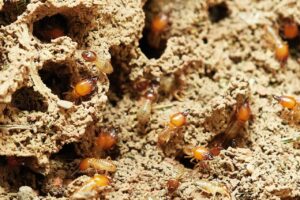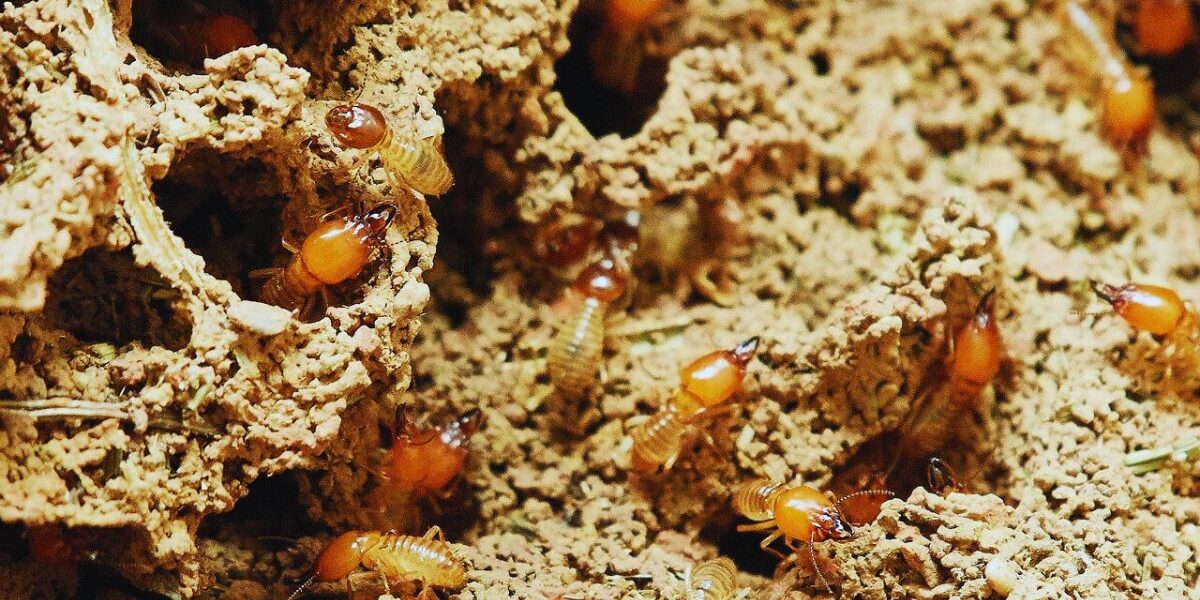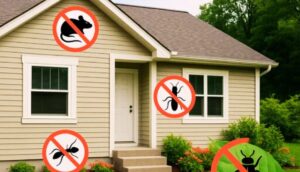What Homeowners Must Know

Flooding can cause more than just water damage to your floors and furniture—it can also create a cozy environment for termites. These tiny pests love damp conditions and can quietly start eating away at your home without you even noticing.
If your house has recently been flooded, no matter how much water came in, it’s a smart idea to think about termite protection before they become a bigger problem.
In this post, we’ll explore how flooding makes termite problems more likely, the signs you should watch for, and simple steps you can take to keep your home safe and sound.
Why Are Termites a Problem After Flooding?
Termites love moisture. When your home is soaked from floodwaters, it’s like setting out a welcome mat for them. Here’s why flooding raises the risk:
-
Damp wood is easy to chew through
-
Moisture weakens protective barriers like paint and sealant
-
Soil shifts may disturb underground termite colonies
-
Leaks or poor drainage create long-term moisture problems
The combination of wet wood and hidden entry points makes your home vulnerable.
How to Spot Termite Activity After a Flood
Flooding may hide signs of a growing termite infestation. Here are red flags to watch out for:
-
Mud tubes on foundation walls or crawl spaces
-
Soft, hollow-sounding wood when tapped
-
Bubbling paint or warping drywall
-
Discarded wings near windows or door frames
-
Clicking sounds inside walls
If you notice any of these signs, it’s time to act fast.
Step-by-Step Termite Control After Flooding
Let’s walk through how to take control of termite risk after a flood.
1. Inspect Your Home Thoroughly
After a flood, start with a full visual inspection:
-
Check basements, crawl spaces, and wooden structures
-
Look around the foundation, especially where wood touches soil
-
Use a flashlight and screwdriver to tap and probe wood for softness
Tip: If you’re unsure, call a licensed termite inspector for a professional evaluation.
2. Dry Out Your Home
Termites can’t thrive without moisture. The faster you dry your home, the better.
-
Use fans, dehumidifiers, and ventilation
-
Remove soaked insulation, carpets, and wallboard
-
Fix any roof leaks or burst pipes immediately
Remember: dry wood is termite-resistant wood.
3. Clear Away Debris and Wood Piles
Floods often leave behind:
-
Tree limbs
-
Mulch
-
Wood scraps
-
Damaged furniture
All of these can become termite breeding grounds if left sitting. Dispose of them as soon as possible, especially if they’re near your home.
4. Seal Entry Points
Even small cracks can be termite doorways.
-
Seal gaps around plumbing, wiring, and foundation
-
Use weatherproof caulk and concrete patch
-
Repair broken siding or roof shingles
Don’t forget: termites are sneaky—they only need a tiny gap to get inside.
5. Apply a Preventive Treatment
This is where termite control products come in.
-
Use termite baits or barriers around the perimeter of your home
-
Spray non-repellent termiticides for long-lasting protection
-
Consider borate wood treatments if you’re renovating
Professional pest control companies can provide stronger, longer-lasting treatments if you’re dealing with a serious risk.
6. Schedule a Professional Termite Inspection
Even if you don’t see signs, it’s still smart to get checked.
Certified inspectors can:
-
Identify hidden activity
-
Recommend localized treatments
-
Create a termite protection plan
Think of it like flood insurance—better safe than sorry.
Top Termite Control Products for Post-Flood Use
Here are a few popular solutions homeowners use:
| Product | Use Case | Type |
|---|---|---|
| Termite bait stations | Long-term prevention | DIY or professional |
| Liquid termiticides | Soil and perimeter defense | Professional |
| Borate sprays | Wood protection | DIY-friendly |
| Foam termiticides | Wall voids and hard-to-reach areas | Professional |
10 Frequently Asked Questions (FAQs)
1. Can flooding cause a termite infestation?
Yes. Flooding creates moist, weakened wood—ideal for termites. Even homes that never had termites before can become targets after a flood.
2. How soon after a flood should I worry about termites?
Immediately. Termites can invade within days if conditions are right. Don’t wait for visible damage—inspect early and often.
3. What kind of termites are most common after floods?
Subterranean termites are the biggest threat. They live underground and quickly spread into flood-damaged homes through soil.
4. Can termites survive a flood?
Surprisingly, yes. Colonies underground often remain intact. Termites may relocate to nearby dry structures—like your home.
5. What’s the best termite treatment after flooding?
A mix of methods works best:
-
Remove moisture
-
Use bait stations
-
Apply termiticide barriers
-
Schedule professional inspections
6. Can I do termite control myself after a flood?
Some steps—like drying your home or setting up bait stations—can be DIY. But severe infestations or deep treatments should be handled by professionals.
7. Is wet wood more likely to attract termites?
Soften or wet wood is easier to chew and break down, making it the ideal food for termites.
8. Are flood-damaged homes more expensive to treat for termites?
They can be. Water damage often hides termite activity. You may need both remediation and pest treatment, which can increase costs.
9. How do I keep termites away long-term?
Focus on prevention:
-
Keep wood dry
-
Fix leaks fast
-
Trim bushes and trees near your house
-
Maintain proper drainage
10. Should I get annual termite inspections?
Yes! Especially if you’ve had flooding. A yearly check-up can detect and catch termite issue early saving thousands in repairs.
Final Thoughts: Protect Your Home After the Storm
Flooding is stressful enough without worrying about termites. But the reality is, moisture creates the perfect storm for infestation. That’s why termite control after flooding isn’t optional—it’s essential.
By taking simple steps—like drying your home, sealing cracks, and using targeted treatments—you can stay one step ahead of these silent invaders.
Remember, you don’t have to do it alone. Professional help is always available, and what is important to note is prevention is always cheaper than repairs.
Ready to Act?
If you’ve experienced flooding recently, don’t wait for termites to show up. Get ahead of the problem:
-
Schedule a termite inspection today
-
Explore top-rated termite control products on Amazon
-
Share this post with friends or neighbors recovering from a storm
Your home is your biggest investment. Let’s keep it termite-free.
Looking for more pest-proofing tips?
Subscribe to our newsletter or browse our blog for more home protection guides.










This was such a practical and eye-opening read. I honestly never realized how quickly termites could move in after a flood — I used to think they were more of a long-term issue, not something that could show up within days. After our basement flooded last spring, we focused on drying things out and fixing water damage, but termite prevention wasn’t even on our radar at the time.
I really appreciate the step-by-step approach here — especially the tips about checking for mud tubes and sealing entry points. Definitely bookmarking this for future reference.
Quick question: Do you recommend termite inspections even in homes with no visible wood damage, or only if symptoms appear? And how long do termiticides typically stay effective after treatment?
Thanks for the helpful info — prevention really does seem to be the best (and least expensive) route in the long run!
Yes it is always good to play it safe because you never know, the application of termitcide once done properly can last for a very, very long time. I hope this helps